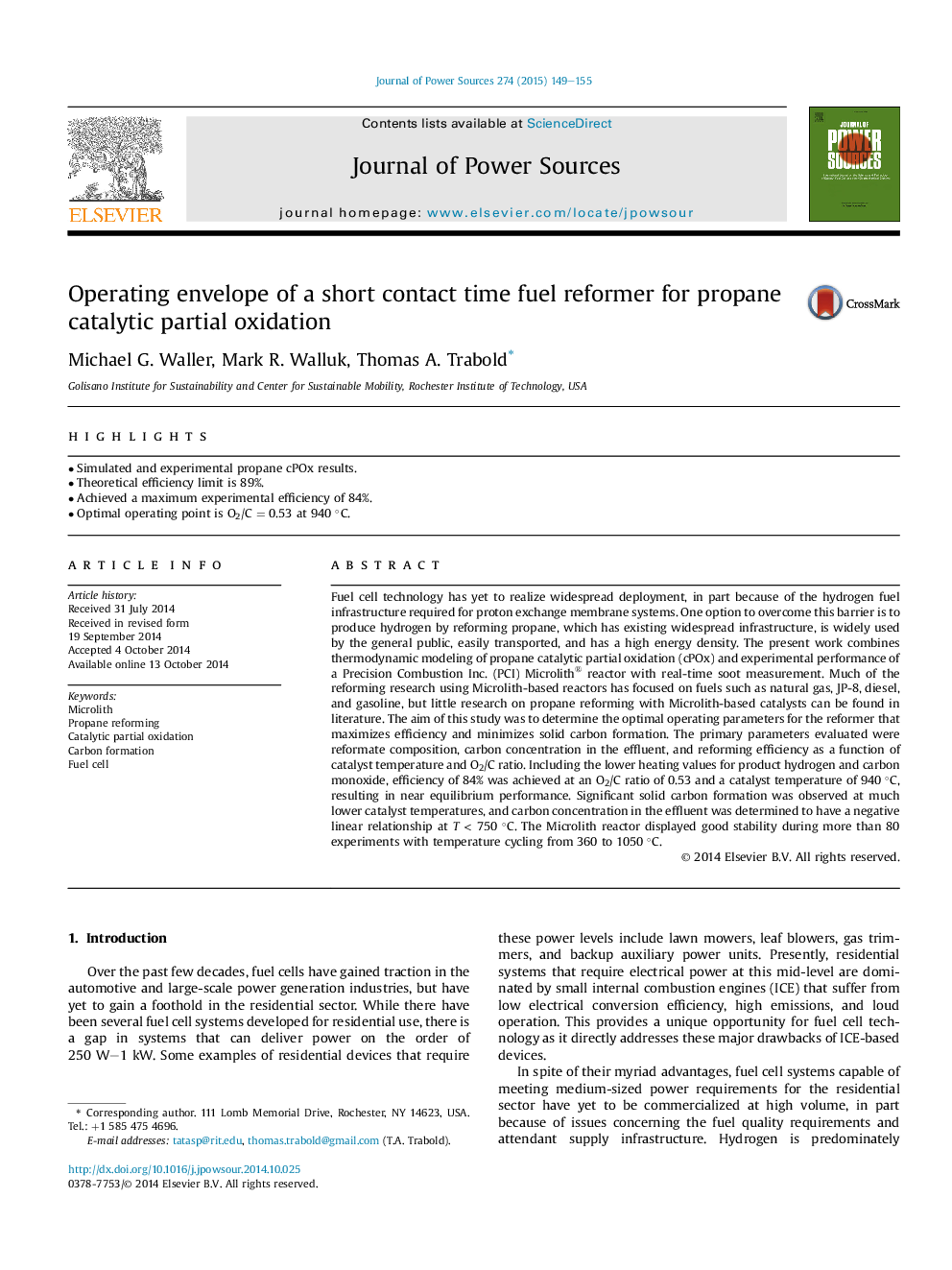| Article ID | Journal | Published Year | Pages | File Type |
|---|---|---|---|---|
| 7734588 | Journal of Power Sources | 2015 | 7 Pages |
Abstract
Fuel cell technology has yet to realize widespread deployment, in part because of the hydrogen fuel infrastructure required for proton exchange membrane systems. One option to overcome this barrier is to produce hydrogen by reforming propane, which has existing widespread infrastructure, is widely used by the general public, easily transported, and has a high energy density. The present work combines thermodynamic modeling of propane catalytic partial oxidation (cPOx) and experimental performance of a Precision Combustion Inc. (PCI) Microlith® reactor with real-time soot measurement. Much of the reforming research using Microlith-based reactors has focused on fuels such as natural gas, JP-8, diesel, and gasoline, but little research on propane reforming with Microlith-based catalysts can be found in literature. The aim of this study was to determine the optimal operating parameters for the reformer that maximizes efficiency and minimizes solid carbon formation. The primary parameters evaluated were reformate composition, carbon concentration in the effluent, and reforming efficiency as a function of catalyst temperature and O2/C ratio. Including the lower heating values for product hydrogen and carbon monoxide, efficiency of 84% was achieved at an O2/C ratio of 0.53 and a catalyst temperature of 940 °C, resulting in near equilibrium performance. Significant solid carbon formation was observed at much lower catalyst temperatures, and carbon concentration in the effluent was determined to have a negative linear relationship at T < 750 °C. The Microlith reactor displayed good stability during more than 80 experiments with temperature cycling from 360 to 1050 °C.
Related Topics
Physical Sciences and Engineering
Chemistry
Electrochemistry
Authors
Michael G. Waller, Mark R. Walluk, Thomas A. Trabold,
